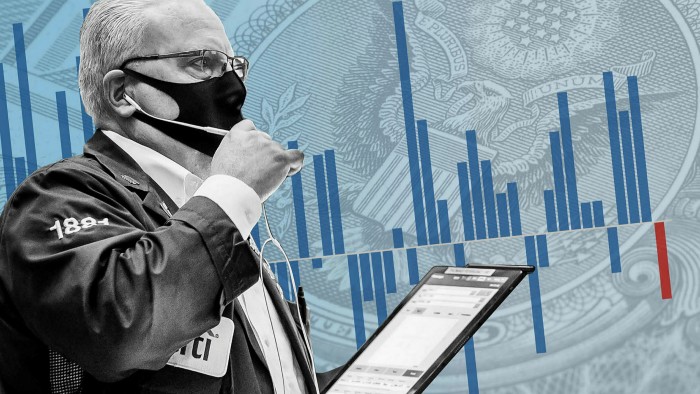Revival of bonds as buffer for market shocks


Roula Khalaf, Editor of the FT, selects her favourite stories in this weekly newsletter.
The recent run-up in government bond yields is a gift to any fund manager fretting over market risks ranging from geopolitics to leverage.
It is true that the first quarter of this year was no fun for holders of government bonds, which dropped in price on the largest scale in four decades. But bond bulls took one for the team.
The pullback means that, just as Russia and the US once again lock horns, and as the Archegos implosion stirs concerns over potentially systemic risks stemming from plentiful global leverage, government bonds again offer something of a safety net.
Led by the US rates market, the biggest in the world and a foundation for global asset prices, bonds tumbled in the opening months of 2021, spooked by the chance of higher inflation as the global economy emerges from pandemic lockdowns.
Bondholders took fright at the notion that supersized fiscal stimulus packages, particularly in the US, might generate a sufficiently rapid rise in consumer prices that bonds’ fixed regular returns appear to shrink or even that central banks might signal an intention to tap the brakes on their essential monetary support — truly, the stuff of investors’ nightmares.
For some fund managers, yields remain too feeble. But for others, they are now high enough to cushion mixed portfolios against a range of risks, and to act as a shock absorber that has helped to produce a respite from volatility.
At the longer end of the maturity spectrum, US 30-year debt now yields about 2.3 per cent. That is towards the lower end of the range that has prevailed for most of the past decade. But compared with the collapse to 0.7 per cent in the darkest days of the coronavirus crisis of 2020, and the 1.3 per cent area it held for most of the year, it is positively lavish.
This provides investors with a super-safe asset that they can use to balance out risks in other areas. Eric Lonergan, a macro hedge fund manager at M&G Investments, said he has been adding US 30-year debt to his portfolio, as it now offered “room for diversification".
“You don’t care about diversification when things are going right,” he said. “You care when something goes wrong. Right now I have a high degree of confidence that if that happens, Treasuries will do well. It’s insurance against anything . . . except much higher US inflation.”
Global stock indices remain at or close to record highs and, without a bizarre change of heart from central banks, they appear destined to keep pushing higher. But geopolitics — including stand-offs between Russia and Ukraine, and China and Taiwan — or acts of God like natural disasters, can always flare up and spark a rush into safe retreats that will rise in price when the going gets tough.
But it is not only acts of God and of politicians that are playing on investors’ minds. Some also point to the recent blow-up of family office Archegos Capital Management as a sign that markets are littered with unstable excesses.
Bill Hwang’s Archegos misfired in large part because of leverage. His bets were overly concentrated, leaving him stranded when one stock tumbled. But the incident hit harder because the bets were supercharged with borrowing. The rampant use of total return swaps, which allow users to bet on a share price without owning the shares outright, meant he was in effect renting investment banks’ balance sheets on an eye-popping scale.
Considered alongside the surge in trading by inexperienced amateurs in January — sometimes, again, using leverage, albeit on a much smaller individual scale — and the relentless frenzy for cryptocurrencies and even digital art, it is easy to build a case that the ocean of cash sloshing around the global system could easily, and unexpectedly, capsize some ships.
“We should not underestimate how, in an increasingly interconnected global financial system, ‘stuff happens’,” wrote Steven Major, chief bonds analyst at HSBC and one of the most strident voices in favour of continued investor demand for bonds.
“There is far too much leverage in the system, much of which may not be visible until something happens. And when these shocks come, money flows to the safest of safe havens, US government bonds invariably being the first choice.”
That may be overly gloomy. Bonds specialists, after all, thrive on doom — it is their job to think of things that can go wrong. And a rethink on leverage is already under way among banks and regulators. Still, it is not hard to imagine leverage gaining traction as a pressing global concern, and bond markets picking up the slack.
Comments